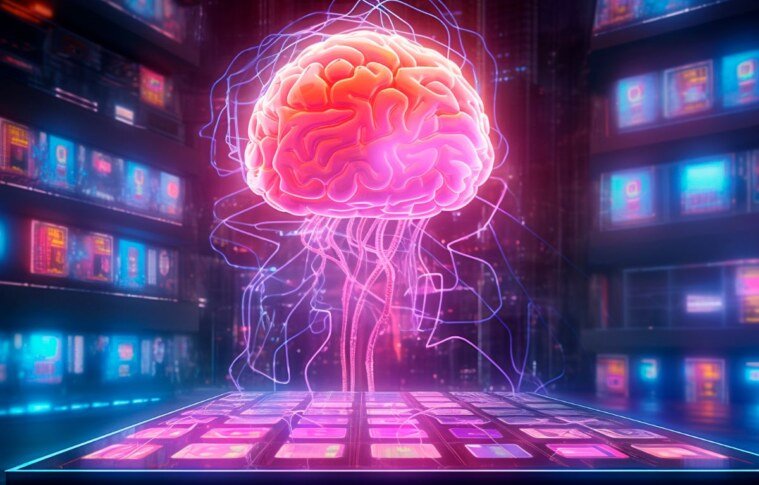In recent years, neurotechnology has emerged as one of the most groundbreaking fields of science and engineering. Central to this revolution is the brain-computer interface (BCI), a technology that enables direct communication between the brain and external devices. With the potential to transform industries such as healthcare, gaming, and education, BCIs are poised to redefine the way we interact with the world. This blog explores the science behind BCIs, their current applications, and the transformative potential they hold for the future.
What is Neurotechnology and Brain-Computer Interface?
Neurotechnology
Neurotechnology refers to a broad range of technologies that interact with the nervous system. These technologies allow for monitoring, interpreting, and influencing neural activity, often with the goal of enhancing cognitive abilities or restoring lost functions. It includes brain imaging tools, neuroprosthetics, and the cutting-edge development of brain-computer interfaces (BCIs).
Brain-Computer Interface (BCI)
A Brain-Computer Interface (BCI) is a system that allows direct communication between the brain and an external device, bypassing traditional pathways like the body’s muscles. BCIs are made possible through sensors that can detect neural activity (brainwaves) and translate them into commands for a computer or robotic device. The technology can be invasive (requiring implantation) or non-invasive (using sensors placed on the scalp).
How Brain-Computer Interfaces Work
At the core of a BCI is the ability to read and interpret brain signals. These signals can be detected using techniques such as:
- Electroencephalography (EEG): Non-invasive sensors placed on the scalp measure electrical activity in the brain. While EEG signals are less precise than invasive methods, they are safe and portable.
- Functional Near-Infrared Spectroscopy (fNIRS): Measures blood oxygenation levels to infer brain activity, often used in non-invasive BCIs.
- Electrocorticography (ECoG): Invasive method where electrodes are placed directly on the surface of the brain to monitor neural activity with high precision.
- Implanted Neural Probes: These involve surgically implanted microelectrodes to read and influence neural activity at a much deeper level.
The data collected from these devices is processed and converted into digital signals, which control the desired action on an external device (e.g., robotic arm, computer cursor, or even a wheelchair).
Current Applications of Brain-Computer Interfaces
1. Medical and Rehabilitation Uses
BCIs have revolutionized medical treatments, particularly for people with neurological conditions, such as:
- Restoring Mobility: Patients with paralysis due to spinal cord injuries or neurodegenerative diseases (e.g., ALS) can use BCIs to control prosthetic limbs or robotic exoskeletons. Research is progressing toward enabling the control of movement by thought alone.
- Speech and Communication: For people who are unable to speak due to conditions like stroke or amyotrophic lateral sclerosis (ALS), BCIs can help restore communication by converting brain signals into text or speech.
- Neuroprosthetics: BCIs enable the control of artificial limbs with incredible precision, allowing amputees to perform delicate tasks like typing or gripping objects, significantly improving their quality of life.
2. Gaming and Virtual Reality
The gaming industry is another area where BCIs are making significant strides. Companies are developing systems that allow users to control game environments or avatars purely with their thoughts. This type of interaction is not only enhancing the gaming experience but also opening new doors for immersive virtual reality (VR) applications.
- Example: Neurable, a startup, has created a VR game that allows players to control elements within the game using their brainwaves. This represents a new frontier for interaction in digital environments.
3. Education and Cognitive Enhancement
BCIs are being tested for applications in education, offering ways to track and improve attention and learning in students. By monitoring brain activity in real time, BCIs can provide personalized feedback and adjust learning environments to optimize cognitive function.
- Example: Muse, a brain-sensing headband, provides real-time feedback on brain states like focus or relaxation, helping users improve mental performance through biofeedback.
4. Mental Health and Emotional Regulation
Neurotechnology can be used for mental health applications, such as treating conditions like depression, anxiety, and PTSD. BCIs can help regulate brainwave activity to promote better emotional states.
- Example: Research is being conducted on using BCIs to modulate the brain’s emotional centers, offering non-invasive treatment options for psychiatric disorders.
The Future Potential of BCIs
As technology continues to evolve, the potential applications of BCIs seem limitless. Here’s a glimpse of the future:
1. Neural Augmentation
BCIs may not only help to restore lost functions but could also enhance human capabilities. This could involve improving memory, attention, and learning abilities through direct brain manipulation or using BCIs to interface with the cloud, giving users near-instant access to information.
2. Enhanced Human-Machine Interaction
In the future, BCIs could allow for seamless integration with machines. For instance, users could control everything from smartphones and computers to home appliances and vehicles directly with their thoughts.
3. Artificial Intelligence Integration
Integrating AI with BCIs could lead to systems that predict and respond to a user’s needs in real time, making interactions with technology more intuitive and effective. For example, AI could assist in interpreting BCI data, optimizing device control, and personalizing user experiences.
Challenges and Ethical Considerations
Despite their exciting potential, BCIs face several challenges:
- Invasiveness and Safety: Invasive BCIs involve surgery, which carries risks, while non-invasive methods may not offer the precision needed for some applications.
- Privacy and Security: As BCIs involve accessing sensitive brain data, ensuring that this information remains private and secure is paramount.
- Ethical Concerns: Enhancing human cognition through BCIs raises questions about inequality, consent, and the potential for misuse in areas like surveillance or military applications.
- Cost and Accessibility: While BCIs have immense potential, they are currently expensive and may not be accessible to everyone, limiting their widespread adoption.
Conclusion: The Brain-Computer Interface Revolution
The Brain-Computer Interface revolution is at the forefront of neurotechnology, with the potential to transform healthcare, entertainment, communication, and beyond. From restoring mobility to enhancing cognitive abilities, BCIs are opening new frontiers in human potential. However, as with any revolutionary technology, it’s crucial to navigate the challenges of safety, privacy, and ethics to ensure these advancements benefit society as a whole.
As research progresses and technology becomes more refined, BCIs could well become a core part of our daily lives, connecting the human brain to machines in ways that were once thought to be science fiction. The future is indeed an exciting one, and the brain-computer interface is a key player in this emerging reality.
Disclaimer
Posts in the Notebook are written by individual members and reflect personal insights or opinions. Please verify any information independently. If you have any concerns, notify the admin immediately so we can take action before any legal steps are taken.





